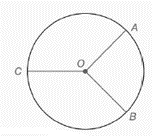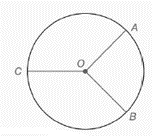
Concept explainers
a) If
b) If

(a)
To find:
The measure of
Answer to Problem 1CT
Solution:
Explanation of Solution
Given:
Approach:
The degree measured around a circle is
Calculation:

From the above circle we have,
(b)
To find:
The measure of
Answer to Problem 1CT
Solution:
Explanation of Solution
Given:
C is the midpoint of major are ACB.
Approach:
The degree measured around a circle is
Calculation:

From the above circle we have,
Now to find the measure of
It is given that C is the midpoint of major are ACB.

C is the midpoint of the arc ACB, then it cuts the arc into two congruent parts.
Thus, measure of the arc is
Want to see more full solutions like this?
Chapter 6 Solutions
Elementary Geometry For College Students, 7e
- Algebra & Trigonometry with Analytic GeometryAlgebraISBN:9781133382119Author:SwokowskiPublisher:Cengage
 Trigonometry (MindTap Course List)TrigonometryISBN:9781337278461Author:Ron LarsonPublisher:Cengage Learning
Trigonometry (MindTap Course List)TrigonometryISBN:9781337278461Author:Ron LarsonPublisher:Cengage Learning

